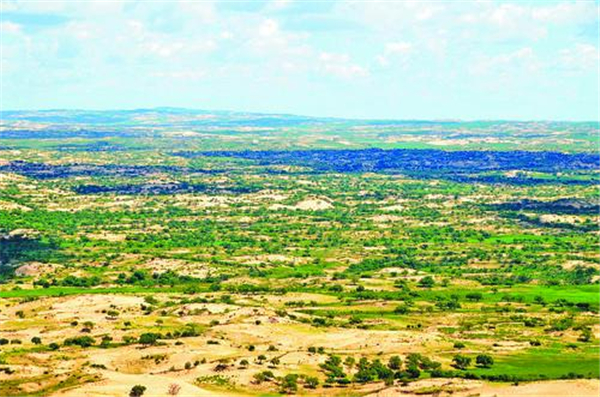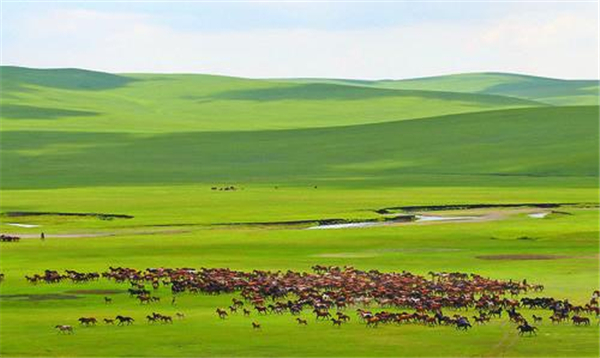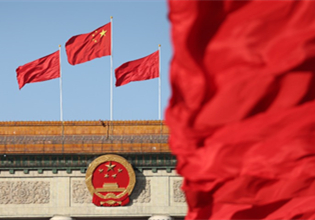Inner Mongolia makes environmental protection efforts

Trees and plants dot previously desertified land in Zhenglan Banner in Xiliin Gol League. [Photo/Inner Mongolia Daily]
North China's Inner Mongolia autonomous region achieved remarkable results in ecological and environmental protection during the 13th Five-Year Plan period (2016-20).
The forest coverage rate and grassland vegetation coverage rate both increased, while desertification and desertified areas were reduced substantially.
During the past five years, Inner Mongolia has forested 47.37 million mu (3.16 million hectares) of land and planted grass over an area of 30 million mu.
It also carried out greening projects over 6.76 million mu of important land and planted 257 million trees.
The region's overall forest coverage rate reached 23 percent, an increase of 1.97 percentage points over 2012, and the comprehensive vegetation coverage rate of grasslands reached 45 percent, the highest since 1990.
Meanwhile, Inner Mongolia treated 71.98 million mu of desert and sandy areas, accounting for more than 40 percent of the country's total goal and exceeding the goal set by the region during the 13th Five-Year Plan period.

Horses majestically gallop through the Hulunbuir Grassland. [Photo/Inner Mongolia Daily]
While accelerating its environmental treatment and improvement efforts, Inner Mongolia has been exploring a path that combines environmental protection with poverty alleviation.
Inner Mongolia has invested a total of 7.55 billion yuan ($1.13 billion) in national public welfare forest compensation funds in impoverished counties and banners, benefiting 246,000 impoverished people.
It also hired 17,300 impoverished people to guard forests.
Additionally, the region's support for the development of a featured forestry economy has benefited 15,000 people.



 Print
Print Mail
Mail





